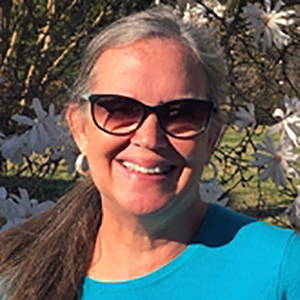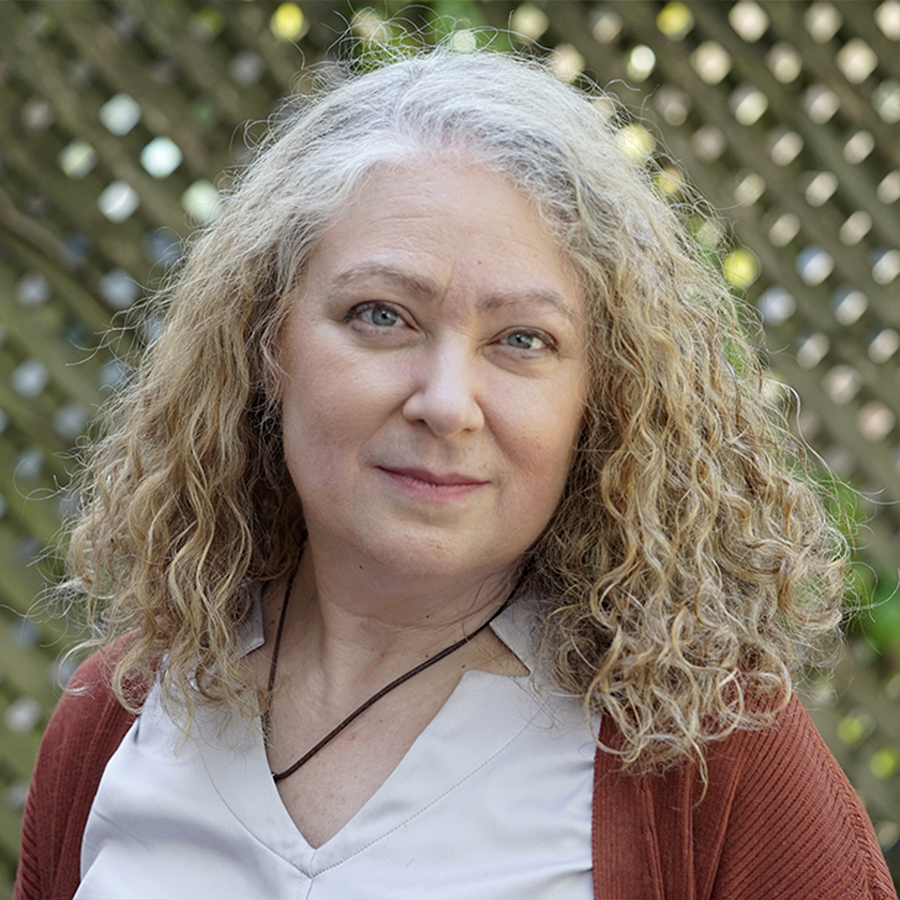
In this article:
- Introducing instructional design
- Designing a student-centered learning experience
- Making the most of the virtual classroom
- Adapting to a rapidly changing digital landscape
Penn LPS Online courses stand out in the field of online education. A Penn course promises the high-quality, immersive education you expect from an Ivy League university; an online course offers greater flexibility and accessibility for students who can’t put their lives on hold while pursuing their academic dreams. Both advantages are built into the infrastructure of Penn LPS Online curriculum by the School of Arts & Sciences (SAS) Online Learning Team, who design, produce, and support the courses envisioned by Penn faculty.

The SAS Online Learning Team supports a wide range of courses at Penn, from 8-week accelerated Penn LPS Online courses to low-residency professional master’s degree programs and graduate-level geosciences courses. “We see ourselves as an innovation team, not just an online team,” says Dr. Jackie Candido, Senior Director of Program Design and Delivery. “We can really be supportive to the faculty and staff across the School of Arts and Sciences, and help any instructor think through assignments. But our focus is mainly on programs for the College of Liberal and Professional Studies (LPS).”
The SAS Online Learning Team has been working at the forefront of remote instruction for more than 25 years. The staff work in three subgroups: instructional designers collaborate with Penn faculty to plan their online courses; the media producers add film, animation, and music to bring courses to life; then technology and operations staff help keep the courses running smoothly once they are launched. “It really takes all three parts of the team to produce excellent online courses,” adds Jackie.
In this article, meet the instructional designers who kickstart the process of building new online courses, and learn how they ensure each course remains engaging, accessible, and enjoyable for students.
Introducing instructional design
Instructional design is the practice of thoughtfully creating learning experiences to help learners effectively and meaningfully apprehend new skills or knowledge. For an instructional designer, even the pedagogical tools we may take for granted can be reevaluated and optimized. For example: “A test doesn't need to be a terrible experience that puts everybody in a stressful situation. It can actually be a learning experience,” says Jackie.

“Instructional design, as a field, centers on learning objectives or learning goals—what students should be able to do or understand when the course is over,” explains Angelina Conti, Director of Digital Learning. “There are different ways of modeling this, but it’s about what types of cognition are going on, which can be a spectrum of thought from remembering all the way up to critical analysis and creativity.”
An individual course will have learning objectives for the entire term, but may also have distinct objectives and goals for each week and even each assignment. “We want to see the course content flowing from and supporting those learning goals,” Angelina continues. “They should be included in the syllabus, almost like an agreement: this is what the course should do for you. Students should have access to those learning objectives, and to be able to see how their class activities and assignments are linked to the larger goals."
“It's all very transparent, which is one thing I like about instructional design,” she says.

To discover the learning objectives for a newly proposed course—and to kick off the months-long process of developing a new course—members of the SAS Online Learning Team meet with the course instructor or co-instructors. Through this initial discussion, the group aims to get an idea of the audiovisual production needs of a particular course—an element handled by the media team—and any particular challenges or opportunities that may arise. “We also develop a sense of how the faculty might be interested in engaging with and interacting with the students,” adds Dr. Clayton Colmon, Director of Curriculum Design. “Some faculty members are very big on having workshops in synchronous sessions. Other faculty members are interested in allowing more group work for students. So it depends on how the instructor feels that students might want to engage.”
The Online Learning Team recommends a minimum of four months to create a new course. The instructional designers typically continue to work closely with faculty throughout that process, positioning themselves as coaches to help instructors reimagine their curriculum as an accelerated online course. “If instructors are new to online teaching, they have to make two really big shifts,” says Angelina. “They're no longer physically co-located with their students, and the Penn LPS Online courses are largely asynchronous. So a lot of our work is sort of helping them figure out the space and time shifts in a very practical way.”
“Oftentimes the coaching process involves connecting faculty to what brings them a sense of joy or excitement about their subject,” adds Clay, “so they can then translate that to the students as well.”
Designing a student-centered learning experience
Faculty, especially instructors who have been teaching for a long time, often have a practical sense of what students should do or learn by the end of the course, and may have their own internal processes for assessing and adjusting throughout the term. Collaborating with the instructional design team helps make that process external and more visible to the students.

“We all do this in different ways,” says Dr. Meryl Krieger, Senior Learning Designer. Her version often includes putting herself in the role of the student as she walks through the course material with the instructor. “Giving students room to explore and take ownership of their learning is something that I come back to every single time I work with a new instructor.”
Angelina describes working with instructors to identify strong verbs that describe learning objectives. “Often faculty will say, ‘I want them to understand.’ And that’s good, but we want to go one or two steps beyond understanding,” she says. “So a lot of the work is describing how the information and course content will be and should be used by students, and doing that as descriptively as possible.”
Another method the instructional designers might use during this process is called backwards design. “We ask instructors to think about their end goals first: what is it that you want students to get out of the class, and how are they going to show you that they got it? What will your final assessments look like?” says Jackie. “You start from the end with what your final assessments are going to look like, then you back up: What do they need to do in order to get there? What kinds of things can you add to the course to encourage all that learning?”
“Often when we're working with faculty, we'll ask: What are the things that you would do in your campus class that are really important?” adds Angelina. “And so part of the conversation is: here’s how we're going to transition those to the online space. And then also: what things that are possible in the online space that might not be possible on campus? Because my thinking about it is that we’re not just recreating campus classes online. We're doing something more.”
Making the most of the virtual classroom
Penn LPS Online students are often drawn to remote learning for its flexibility: an online education allows them to eliminate long commutes to campus, or to fit in coursework around a busy schedule, or to work with leading experts without leaving their hometowns. “Online spaces allow for students to remain in the communities that they want to help and serve without having to uproot themselves and go to a campus in some other place,” says Clay.
Beyond flexibility, there are elements of the online experience that might be more accessible or effective for some learners. “What amazes me is just how much our students are building networks among each other, within and across their classes,” says Meryl. “You have access to all of your classmates in ways that you probably don't in an in-person classroom.” Clay agrees: “Even if it isn't a class specifically targeted toward digital strategies, the online space creates an environment for students to practice forms of digital citizenship,” he adds. “Students can have conversations with people who they may never meet in their lives—whether it's across generations or across forms of identity. I think it empowers them. It also gives them a sense of connection and rootedness, and I think that's a beautiful thing.”
Online instruction also allows the opportunity to engage different learning modalities by incorporating audio and visual material as well as opportunities for interaction and learning-by-doing. There is also simply more time for students to think and respond in an asynchronous online classroom, Angelina points out. “For people who might be a little more quiet in rapid-fire class discussions, people who need thinking time to formulate responses or contributions, people for whom different modalities really work, the digital courses can really be good,” she says.
“For me, online learning really plays an important role. I have a visual impairment,” adds Jackie, whose trained assistance dog, Kismet, has a special job title on the SAS Online Learning Team staff list (Executive Support Canine). “In a classroom, I would be extremely quiet because I wouldn't be able to see the board. I'm not really going to participate very well. But in an online space, I feel like my voice is equal to everyone else; it’s easier for me to type and to see what others are writing.”
“Our team is really very serious about accessibility,” Angelina agrees; it is important for course content to comply with Web Content Accessibility Guidelines and ADA accessibility standards, not only because it is required but because doing so ensures a better course experience for all students. “Thinking about the different ways to make content accessible is our ethos," she says. "Transcripts, captions, and alt text can be really, really helpful.”
Adapting to a rapidly changing digital landscape
The Bachelor of Applied Arts and Sciences and Penn LPS Online courses and certificates launched in 2018; while new courses are added every year, many established courses have been running for seven years and counting. “The BAAS program is mature now. We’re at a point now where we've come back around to the oldest courses to give them a refresh,” says Angelina. “Faculty are always tinkering from one semester to the next, but now we can look at a course intensely to see if there's space for improvement. For many of them, it's not really a redesign, but it certainly is an iteration on the design.”
In seven years, the landscape of remote learning has continued to change—from the widespread adoption of certain digital tools during the pandemic to the emergence of new technologies. “Part of our job is to stay abreast of the things that are happening in real time,” says Clay. To that end, the Online Learning Team often offers workshops for faculty across Penn to discuss challenges that they encounter in the classroom, from refining learning objectives and scaffolding semester-long projects to understanding new technological tools like generative AI. “We’ve also done presentations outside of Penn,” notes Clay. “We’re not just the innovation team for the School of Arts and Sciences. We’re recognized outside of Penn for our work, and we're always learning.”
To learn more about the Penn LPS Online learning experience, visit Am I Ready for Online Learning? and How to succeed in Penn LPS Online courses.
